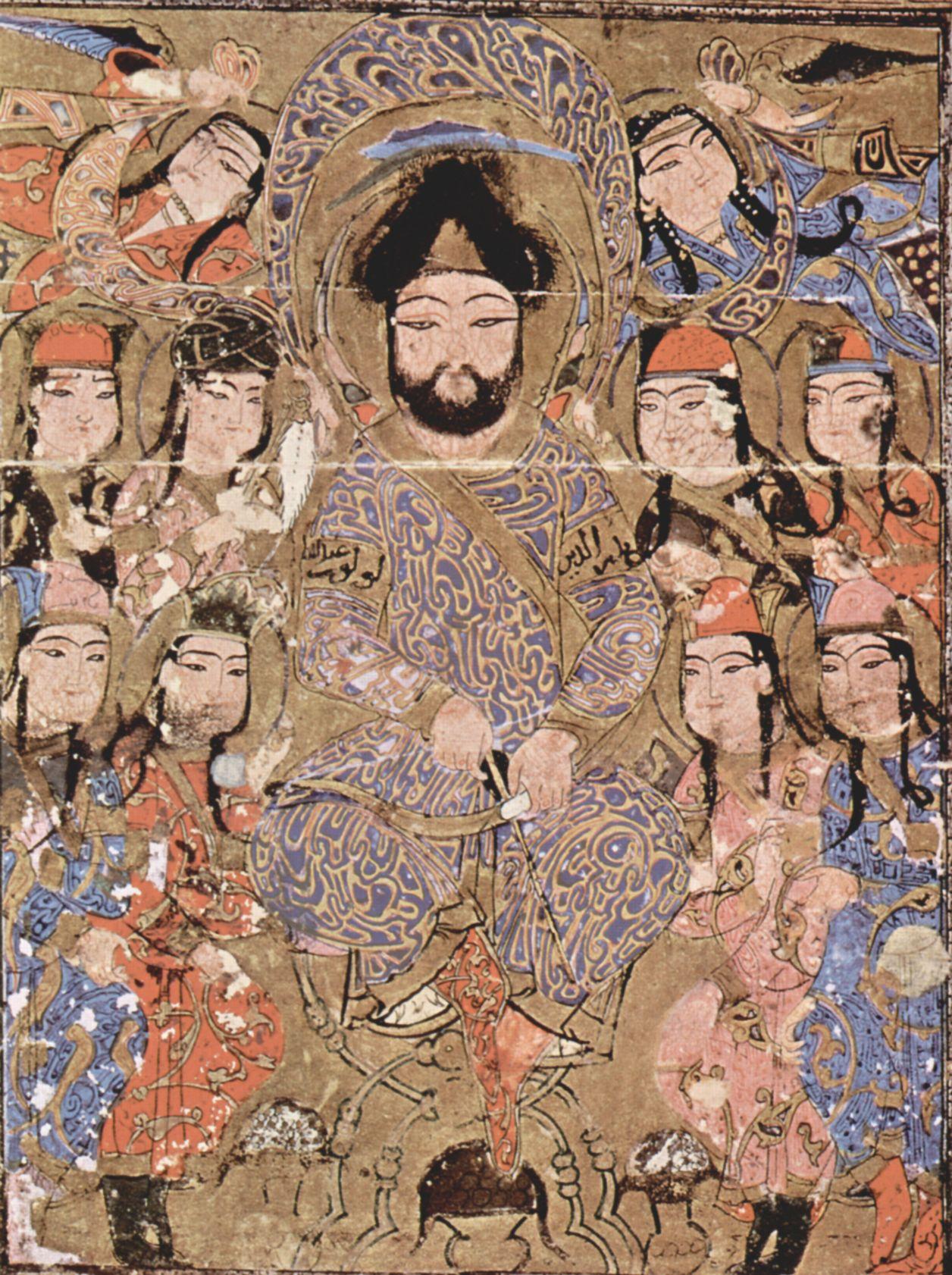Frontispiece of Volume 17 from a copy of Abu'l-Faraj al-Isfahani's Kitab al-Aghani
(Book of Songs) Iraq, Mosul; 610H/1219AD
Enthroned Ruler And His Entourage
The Book of Songs is an anthology of early Arabic poetry that not only has literary value, but is also important from a cultural historical point of view.

An even larger image of the Frontispiece of Volume 17 from a copy of Abu'l-Faraj al-Isfahani's Kitab al-Aghani (Book of Songs), 1219AD.
Istanbul, Millet Library, Ms Feyzullah Efendi 1566.
Referenced as Figure 3. in Sultans with Horns: The Political Significance of Headgear in the Mamluk Empire by Albrecht Fuess
North Iraq, ca. 1218-19: Ruler wearing a qabāʾ turkī with ṭirāz bands.
On his head is a sharbūsh. His attendants also wear Turkish costumes.
Most wear the cap known as kallawtah. From the frontispiece of the “Kitāb al-Aghānī”
(Millet Kütüphanesi [Istanbul] MS Feyzullah Efendi 1566, fol. 1b).
(The ruler is generally identified with Badr al-Dīn Luʾluʾ, Atabeg of Mosul, who died in 657/1259.
See Carole Hillenbrand, review of Badr al-Din Luʾluʾ:
Atabeg of Mosul, 1211-1259, by Douglas Patton, British Journal of Middle Eastern Studies 24, no. 2 [1997]: 266.)
23. Frontispiece of Kitāb al-Aghāni from Iraq, ca. 1218/19 depicting the enthroned atabeg Badr al-Din LuʾLuʾ ʿAbd Allāh wearing a gold brocaded (zarkash), lined qabāʾ turki with gold tirāz armbands on which his name is clearly inscribed.
His boots are of red leather with gold, probably stamped, vegetal decoration.
On his head is a fur-trimed sharbūsh.
Most of his attendants wear Turkish coats, boots, and a variety of kalawtāt (Millet Kūtūphanesi, Istanbul, Feyzullah Efendi ms 1566. folio 1b).
Source: Fig. 23, Arab Dress. From the dawn of Islam to Modern times by Smirna Si
Back to a smaller image of the Frontispiece of Volume 17 from a copy of Abu'l-Faraj al-Isfahani's Kitab al-Aghani

